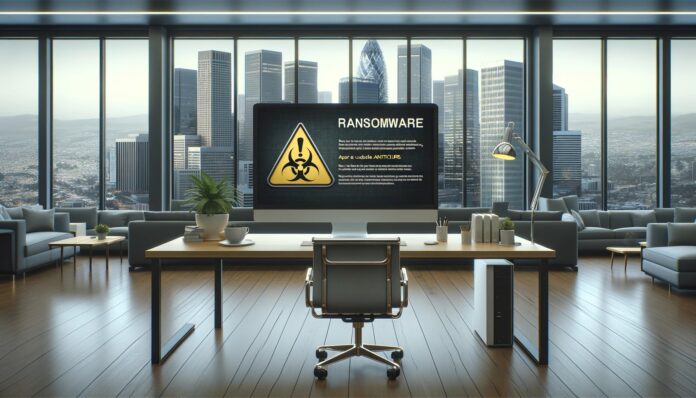

Ransomware attacks have become one of the most dangerous cybersecurity threats in recent years. As cybercriminals increasingly target individuals, businesses, and even government organizations, the choice of whether or not to pay the ransom has become a contentious issue. In many cases, victims of ransomware attacks are faced with a difficult decision: to pay the ransom and hope their data is restored, or to refuse and risk losing access to vital information. While paying the ransom might seem like a quick solution, doing so can have serious consequences.
Here’s a closer look at the potential repercussions of giving in to ransomware demands and why experts warn against it:
1. Funding Cybercrime and Encouraging More Attacks
Paying a ransom directly fuels the cybercriminal ecosystem. Hackers rely on successful attacks to fund their operations, develop more sophisticated malware, and continue their malicious activities. By agreeing to pay, organizations essentially encourage attackers to continue targeting others, knowing they will be rewarded for their efforts. Ransom payments also make it more likely that the organization will be targeted again in the future, or even worse, that the same group of hackers might attack more critical infrastructure with higher stakes.
2. No Guarantee of Data Recovery
One of the biggest risks of paying a ransom is the lack of guarantees. Even if the ransom is paid, there is no assurance that the attackers will restore the encrypted data. In many cases, victims may never regain access to their files or systems, or they might receive corrupted data that is unusable. Hackers may also decide to target the same victim again, knowing that the organization is willing to pay. This uncertainty leaves businesses vulnerable to repeated attacks and can cause long-term operational disruptions.
3. Legal and Regulatory Consequences
In certain industries, particularly those dealing with sensitive data such as healthcare, finance, and government, paying a ransom can lead to serious legal consequences. Governments and regulatory bodies are increasingly scrutinizing organizations that pay ransoms, as such payments can be seen as enabling criminal activity. For example, in the U.S., the Office of Foreign Assets Control (OFAC) can impose penalties on organizations that pay ransoms to cybercriminal groups associated with sanctioned entities or countries. These penalties can be hefty, and companies may find themselves facing both legal and financial repercussions if they pay with-out considering the broader implications.
4. Loss of Trust and Reputation Damage
Paying the ransom can also damage a company’s reputation. Customers, clients, and stakeholders may lose trust in an organization that appears unable to protect its data or prevent cyberattacks. If news of the ransom payment becomes public, the organization may be perceived as weak or ill-prepared for cyber threats, leading to a decline in business and potential loss of con-tracts. In highly competitive industries, reputation damage can be an existential threat. Customers may take their business elsewhere if they feel that the organization is not taking sufficient steps to protect their personal information.
5. Financial Costs Beyond the Ransom
Even if an organization decides to pay the ransom, the financial costs don’t end there. The total expense of a ransomware attack includes the ransom payment itself, but also the cost of recovering from the attack. This could involve rebuilding systems, restoring backups, implementing enhanced security measures, and dealing with lost productivity. According to a 2021 report from Emsisoft, the total cost of recovery from a ransomware attack can be many times the ransom itself, particularly when considering reputational damage and long-term business disruption. The overall financial toll can be devastating, especially for smaller businesses that may not have the resources to weather such a crisis.
6. Risk of Further Exposure and Data Leaks
In many cases, hackers don’t just encrypt data—they steal it as well. If a ransom is paid, there is no guarantee that the stolen data will not be leaked or sold on the dark web. Cybercriminals may threaten to release sensitive information, such as customer data, intellectual property, or classified government documents, unless they receive additional payments. In addition to the financial impact, this can lead to significant breaches of privacy, identity theft, or espionage. In extreme cases, leaked data can lead to criminal investigations, lawsuits, and government penal-ties for failing to protect sensitive information.
7. Encouraging a Cycle of Extortion
Another critical concern is that paying the ransom can create a vicious cycle of extortion. As cybercriminals recognize that paying victims is an effective way to earn money, they may continue to develop new, more sophisticated strains of ransomware. With each successful attack, the hackers learn and adapt, using more targeted tactics to compromise high-value systems. This can lead to a broader range of targets, including critical infrastructure, hospitals, schools, and government agencies, putting entire sectors at risk.
8. Undermining Cybersecurity Defenses
When companies give in to ransomware demands, they may inadvertently undermine their own cybersecurity initiatives. Instead of focusing on strengthening security measures and improving defenses, organizations may be more likely to rely on the idea that paying a ransom is a quick fix. This can lead to complacency, with businesses failing to implement necessary protections, such as regular backups, employee training, or updated security protocols. Ultimately, this weakens the organization’s overall cybersecurity posture and makes it more susceptible to future attacks.
The Better Approach: Prevention and Preparation
Given these significant risks, experts generally recommend that businesses and individuals do not pay ransomware demands. The focus should instead be on proactive prevention, preparation, and incident response planning. Regularly updating and patching systems, educating employees on phishing and cybersecurity best practices, and maintaining secure and redundant backups are essential steps to mitigate the risks of ransomware attacks.
In the event of a ransomware incident, organizations should contact cybersecurity professionals and law enforcement agencies for assistance in recovering their data and mitigating the impact of the attack. Many organizations can also work with data recovery experts or cybersecurity firms to help restore encrypted files without paying a ransom.
Conclusion
While paying a ransom may seem like the easiest way out of a ransomware attack, the long-term consequences often outweigh the immediate relief it might provide. Funding cybercriminals, facing potential legal and financial penalties, and risking further data exposure are just a few of the serious risks associated with compliance. Instead, organizations should focus on strengthening their cybersecurity defenses, investing in prevention, and preparing a robust incident response plan to avoid falling victim to ransomware in the first place. Ultimately, resisting the temptation to pay is not only a smarter move—it is a critical step toward breaking the cycle of cybercrime.

















